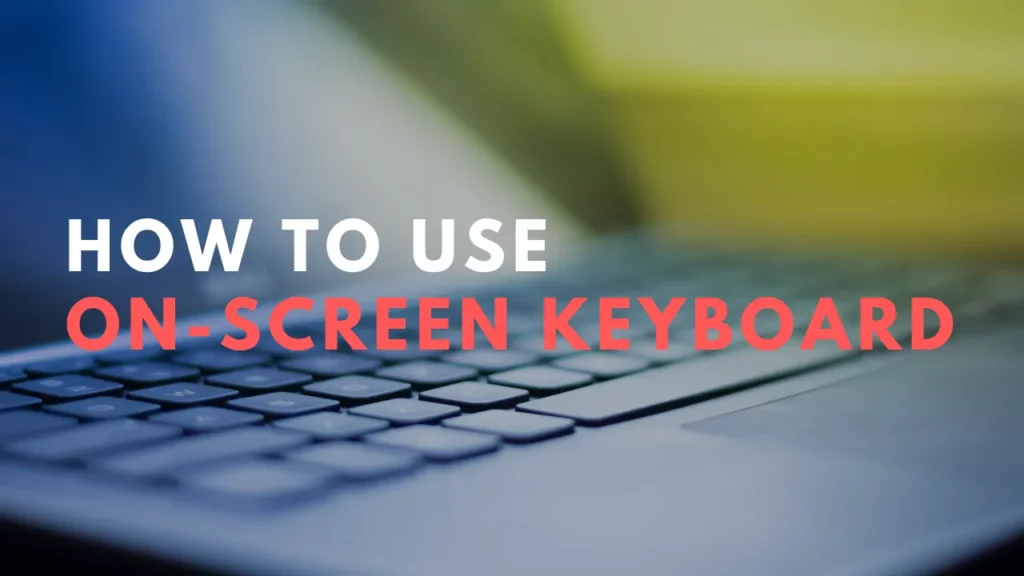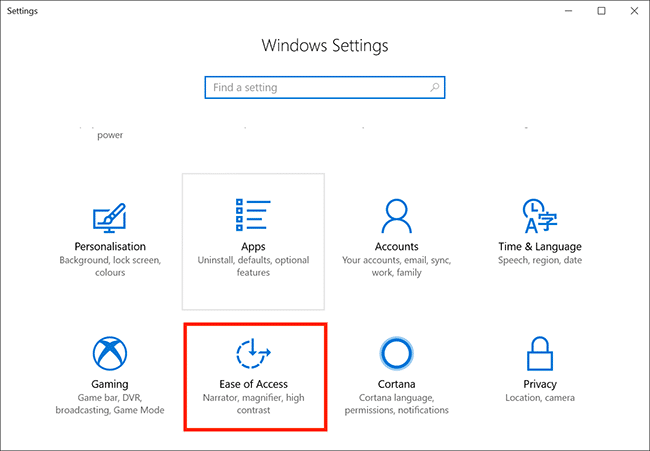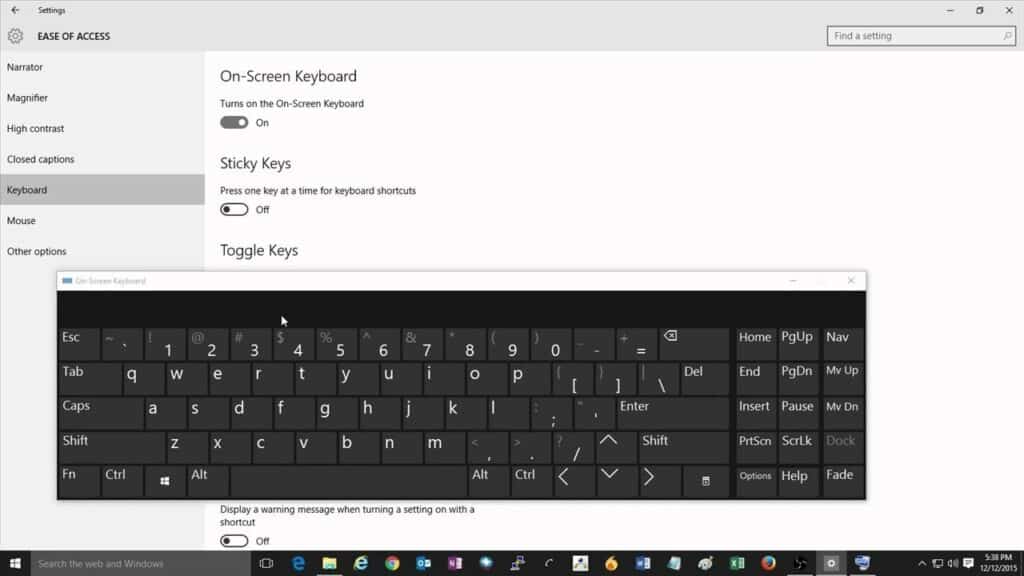How To Use The On-Screen Keyboard (Guide)
Whether you use a tablet, smartphone, or laptop doesn’t matter. The on-screen keyboard can be easily used for entering text and commands.
It can be a game-changer for those with difficulty using a physical keyboard or a device without a built-in keyboard.
You are at the right place if you don’t know how to use your laptop’s on-screen keyboard.
In this article, we will explore how to activate the on-screen keyboard on different operating systems and how to use it.
So let’s get started.

Features of On-Screen Keyboards
Predictive Text and Word Suggestions
On-screen keyboards often include predictive text and word suggestion capabilities:
- Predictive Text: This feature anticipates the next word you might type based on your typing history and context, allowing for faster text entry.
- Word Suggestions: As you type, the keyboard displays a list of suggested words, which you can select to complete your sentence without typing the entire word.
Keyboard Size and Location Customization
Customization options are available to adjust the on-screen keyboard to user preferences:
- Size Adjustment: Users can change the size of the keyboard to suit their needs, making it easier to use on different screen sizes or for individuals with visual impairments.
- Location Customization: The keyboard’s position on the screen can be adjusted, allowing users to place it in a convenient location that does not obstruct their view or interfere with other applications.
Additional Features
Autocorrect
The autocorrect feature automatically corrects common typing errors as you type:
- Error Correction: This feature helps maintain accuracy by correcting typos and misspelled words in real-time, reducing the need for manual corrections.
- Language Support: Autocorrect can be configured to support multiple languages, enhancing its utility for multilingual users.
Using An On-Screen Keyboard In Windows
Windows 10 has a built-in on-screen keyboard. Listed below are the steps to access and use it on your device:
- Step 1: Click on the “Start” menu in the bottom left corner of the screen.
- Step 2: Click on the “Settings” icon, which looks like a gear.
- Step 3: In the Settings window, click “Ease of Access.”

- Step 4: In the Ease of Access window, click “Keyboard.”
- Step 5: Toggle the switch for the “On-Screen Keyboard” to the “On” position.

- Step 6: The on-screen keyboard will now appear on your screen.
- Step 7: Click on the keys with your mouse or touch screen to use the on-screen keyboard. You can also type by hovering over the keys with your mouse or using a stylus.
The on-screen keyboard has additional features like predictive text and word suggestions. These can help you type more quickly and accurately.
- To access these features, click the “Options” button on the on-screen keyboard. Select “Show text suggestions as I type” or “Autocorrect misspelled words,” depending on your preference.
- You can also change the keyboard size and location by clicking on the “Options” button and selecting “Resize” or “Move.”
How To Use On-Screen Keyboard In Windows 8 And 8.1
Windows 8 and 8.1 also have a built-in on-screen keyboard that can be accessed similarly to Windows 10. Here are the steps to use the on-screen keyboard in Windows 8 and 8.1:
- Step 1: Swipe in from the right edge of the screen to access the Charms menu, or press the Windows key + C.
- Step 2: Click on the “Settings” icon in the Charms menu.
- Step 3: Click on the “Change PC settings” option at the bottom of the Settings menu.
- Step 4: In the PC settings window, click “Ease of Access.”
- Step 5: In the Ease of Access window, click “Keyboard.”
- Step 6: Toggle the switch for the “On-Screen Keyboard” to the “On” position.
The on-screen keyboard will now appear on your screen. You can use additional features like “autocorrect,” “resize,” or “move” as per your preference.
Using an on-screen keyboard in Windows 7-based systems:
Listed below are the steps to activate the on-screen keyboard on windows 7:
- Step 1: Click the “Start” button in the screen’s bottom left corner.
- Step 2: Go to “All Programs” > “Accessories” > “Ease of Access” > “On-Screen Keyboard.”
- Step 3: The on-screen keyboard will now appear on your screen.
Tips and Tricks for Using On-Screen Keyboards
Using Shift, Ctrl, and Alt Keys
- Modifier Keys: On-screen keyboards allow you to use modifier keys like Shift, Ctrl, and Alt just as you would on a physical keyboard. You can click or tap these keys to keep them “pressed” while selecting another key. This is useful for executing keyboard shortcuts or typing capital letters and special characters.
- Combination Emulation: Some on-screen keyboards support emulating key combinations by clicking a key with the middle mouse button, which can simulate pressing a key in combination with the Ctrl key.
Word Prediction and Speech-to-Text
- Word Prediction: Many on-screen keyboards offer word prediction features that suggest words as you type. This can speed up typing by reducing the number of keystrokes needed.
- Speech-to-Text: Some on-screen keyboards include dictation or speech-to-text capabilities, allowing you to input text verbally instead of typing it manually. This feature can be particularly useful for users with limited mobility or those who prefer voice input.
Closing the On-Screen Keyboard
- Manual Closure: To close an on-screen keyboard manually, you can typically click an ‘X’ button or use a specific keyboard shortcut provided by the operating system5.
- Settings Adjustment: In Windows, you can turn off the on-screen keyboard by navigating to Settings > Ease of Access > Keyboard and toggling off the “Use the On-Screen Keyboard” option. This will prevent it from appearing automatically.
Frequently Asked Questions (FAQ)
Q1. How do I use my on-screen keyboard?
Ans: To use your on-screen keyboard, open it from your computer’s accessibility settings or search for it. Then, use your mouse to click on the keys or touch the screen.
You can also use Shift, Ctrl, and Alt keys by clicking them and then the letter or symbol you want to modify.
Other features like word prediction and speech-to-text may also be available. When finished, simply close the on-screen keyboard.
Q2. Is there a keyboard lock function?
Ans: Keyboards have a lock function that allows you to lock certain keys or temporarily disable certain features.
This feature can vary depending on the keyboard model and brand, so consult the manual to learn how to use it.
Q3. How do I enable the virtual keyboard in Chrome?
Ans: First, open Chrome and navigate to the Settings menu to enable the virtual keyboard in Chrome.
From there, click “Advanced” to expand the options, and click “Accessibility.” Look for the option to “Use virtual keyboard,” and turn on the toggle switch to enable it.
Final Words
You can easily start using the on-screen keyboard by following the above steps.
This would make your digital experience more accessible and efficient.
It doesn’t matter whether you have a disability that requires it or simply prefer an on-screen keyboard’s convenience.
The tips and tricks provided here will help you get the most out of this feature.






